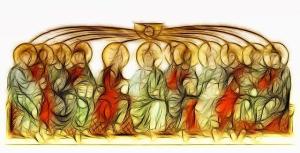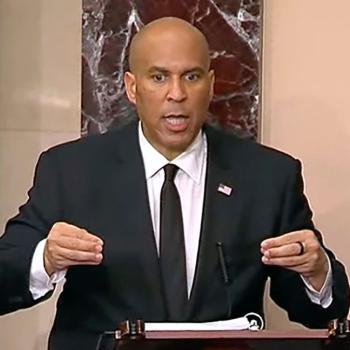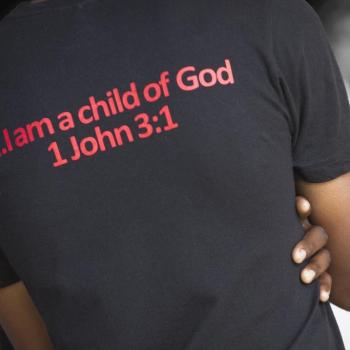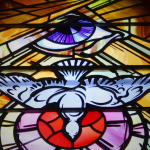
Christ chose 12 ordinary Jewish men to leave their old lives behind and follow him during his three-year ministry on earth. They were mostly simple, uneducated men and included several fishermen, a tax collector and a thief who eventually betrayed Jesus to the authorities.
They remained the primary disciples even when Christ attracted other followers, including women, as he went about teaching and preaching in Galilee and Judea.
WHO WERE THE 12 DISCIPLES?
Christ chose these men:
1. Simon Peter
2. Andrew, brother of Simon Peter
3. James, son of Zebedee
4. John, son of Zebedee
5. Philip
6. Bartholomew
7. Matthew
8. Thomas
9. James, son of Alphaeus
10. Simon the Zealot
11. Thaddeus, also called Jude or Judas the Zealot
12. Judas Iscariot
As he prepared for his ascension into heaven, Christ instructed his 12 disciples to share the things he taught them with the world. He told them, “Go ye therefore and make disciples of all nations, baptizing them in the name of the Father and of the Son and of the Holy Spirit, teaching them to observe all that I have commanded you. And behold, I am with you always, to the end of the age” Matthew 28:19-20. This passage is known as The Great Commission.
The words “disciple” and “apostle” are not interchangeable. “Disciple” means “learner,” and it applies to the 12 during Christ’s earthly ministry. They became apostles, or messengers, when Christ completed his earthly ministry and instructed them to share his message with the world.
WHAT DO WE KNOW ABOUT THE 12?
PETER was apparently the disciples’ spokesman. He worked with his brother Andrew and two friends, brothers James and John, as fishermen on the Sea of Galilee before Christ called all four men to be disciples.
The Bible describes Peter as emotional, outspoken, volatile and impulsive. It tells how he took a sword and cut off a man’s ear in order to prevent Christ’s arrest. He also challenged Christ to let him walk on water. Jesus said, “Come,” and Peter took a few steps before his faith faltered. He started to sink, but Christ intervened. Peter also became fearful of arrest at one point and denied that he knew Jesus.
Nevertheless, Christ chose Peter to lead the early church, saying: “And I say also unto thee, Thou art Peter, and upon this rock I will build my church, and the gates of hell shall not prevail against it” (Matthew 16:18). Peter was one the greatest leaders of the first century church and is recognized as the first pope by Catholics.
According to church scholars, Peter went to Rome around 61 A.D., where emperor Nero condemned him to death. Peter was crucified, head down at his own request because he did not feel worthy enough to die as Christ had died. Peter’s wife also may have been a follower of Christ and was crucified while her husband watched.
Peter’s brother ANDREW was a follower of John the Baptist before he became the first of the 12 disciples to follow Christ. John the Baptist pointed Jesus out to Andrew and others, saying he is “the Lamb of God who takes away the sin of the world” (John 1:35-42).
After leading his brother Peter to Christ, Andrew became a supporting player rather than a leader.
Jesus called two other brothers, JAMES and JOHN, to follow him at the same time he called Peter and Andrew. Like Peter, they became part of Christ’s inner circle.
John was fiery and had a larger-than-life personality. Christ called him and his brother James “sons of thunder,” which may have been a nod to their passionate and stormy personalities.
When Mary Magdalene reported that Christ’s tomb was empty on the first Easter Sunday, John and Peter went to see for themselves. John also traveled to Jerusalem with Peter to preach the gospel and suffered beatings and imprisonment.
As the purported author of five New Testament books – John, First, Second and Third John, and Revelation – John was an important figure in the Christian faith. He outlived the other disciples according to church tradition and was the only apostle to die of natural causes.
PHILIP is a lesser-known, but enthusiastic disciple who may have encouraged Bartholomew to follow Jesus.
Philip once asked Christ to show the disciples the Father. Jesus replied, “Have I been with you so long, and yet you have not known me, Philip? He who has seen me has seen the Father” (John 14:8-9).
Biblical scholars believe Philip preached the gospel in modern-day Turkey, where he died a martyr.
BARTHOLOMEW was skeptical when the apostle Philip introduced him to Christ. At their first encounter, Christ said to Bartholomew, “Here is a true Israelite in whom there is nothing false.” Bartholomew asked, “How do you know me?” Christ answered by saying, “I saw you while you were still under the fig tree before Philip called you,” to which Bartholomew said, “Rabbi, you are the Son of God.”
Church tradition says that Bartholomew served as a missionary to Armenia, Mesopotamia (modern Iraq), Parthia (part of modern Iran), Lycaonia (modern Turkey), and possibly India.
The Bible says little else about him.
MATTHEW was a tax collector who enjoyed a comfortable life before becoming a disciple. The Jews saw tax collectors as dishonest men who exploited their own people on behalf of the Romans who ruled them.
People criticized Christ for socializing with men like Matthew, but Christ told critics, “I came not to call the righteous, but sinners” (Mark 2:15-17).
Despite his failings, Matthew immediately left his old life behind to become a disciple when Jesus said, “Follow me.”
THOMAS is best known to us as “Doubting Thomas” because he required proof that Christ had risen from the dead. The proof came when he touched the wounds Christ received when he was crucified.
He may have been born in Galilee and possibly died in India. His name means “twin.”
JAMES, SON OF ALPHAEUS, was the second apostle named James. The Bible says little about him other than he was present in an upper room in Jerusalem after Christ ascended into heaven.
SIMON THE ZEALOT is another mystery man in the Bible. The scripture mentions his name in three places, and Acts 1:13 tells us that he was with the other disciples in the upper room.
Little is known about BARTHOLOMEW. Scholars are not even sure of his name. Some religious experts believe he also was called Nathanael or Nathaniel, while others think Bartholomew and Nathanael were two different people.
The books of Matthew, Mark and Luke mention him, and he reportedly witnessed Christ’s ascension.
JUDAS ISCARIOT is notorious because he betrayed Jesus with a kiss prior to the crucifixion. Consequently, people through the ages have despised him.
The word “Iscariot” means “dagger man,” which suggests that Judas was a zealot who carried a knife to kill traitors to his cause. His group of zealots believed the long-promised Messiah would lead them against Rome and establish a kingdom on earth. They thought Christ was that Messiah, but became disillusioned when he showed no interest in rebellion.
Jesus placed Judas in charge of the disciples’ money bag or box, and Judas started stealing from it. Jesus knew about the thefts, but allowed them to continue, possibly to teach a lesson about treasuring the wrong things. “You cannot serve God and money,” Christ said (Matthew 6:24).
Judas was not only a thief, but also a traitor. He pointed out Christ to the authorities for 30 pieces of silver, which lead to Christ’s trial and crucifixion. Judas regretted the betrayal and hanged himself.
WERE THERE OTHER APOSTLES?
Following Christ’s ascension, the apostles voted to replace Judas with a follower of Jesus named Matthias, according to the book of Acts. Matthias apparently followed Jesus throughout his early ministry, but the New Testament tells us nothing else about this disciple.
One of the most influential apostles was Paul, a Greek-speaking Jew from Tarsus. He was not one of the original 12 apostles, but his letters to early Christian churches had an enormous influence on the Christian faith.
Some scholars consider him second only to Christ in importance to the church and attribute 13 of the 27 books in the New Testament to him and the people he influenced.
Paul’s original name was Saul, and as such, he persecuted Jews who followed Christ. Saul was traveling to Damascus when he saw a blinding light and God revealed Christ’s divinity to him. He became known as Paul upon his conversion.
As an apostle Paul was instrumental in spreading the gospel to the Gentiles, who were non-Jewish. He also founded several Christian churches in Europe and Asia Minor. The letters to those churches are the basis for several New Testament books, including Romans, First and Second Corinthians, Galatians, Ephesians and others.
He may have been executed in Rome.
WHAT ARE THE SOURCES?
It is difficult to attribute specific parts of this article to specific sources because numerous sources report the same information. That said, my sources include the Holy Bible and these religious websites: learnreligions.com, britannica.com, bibletools.org, bibleinfo.com, overviewbible.com and crosswalk.com. — Ginny
















